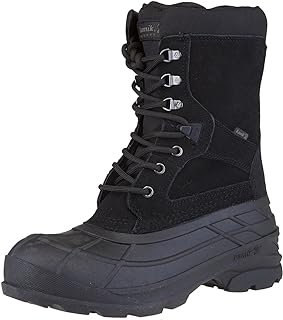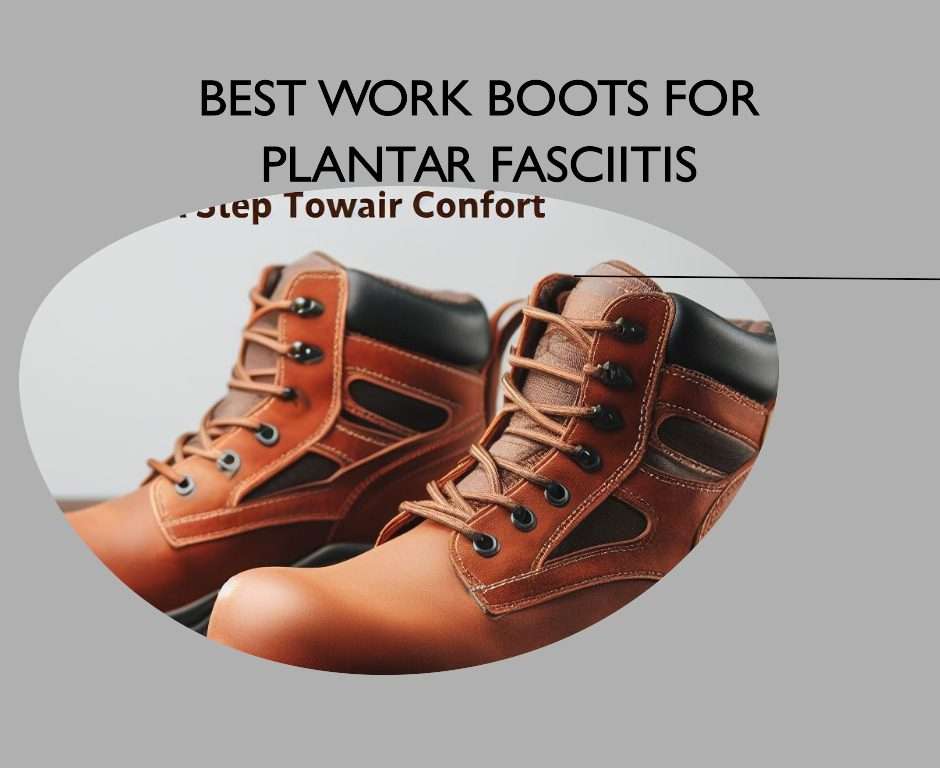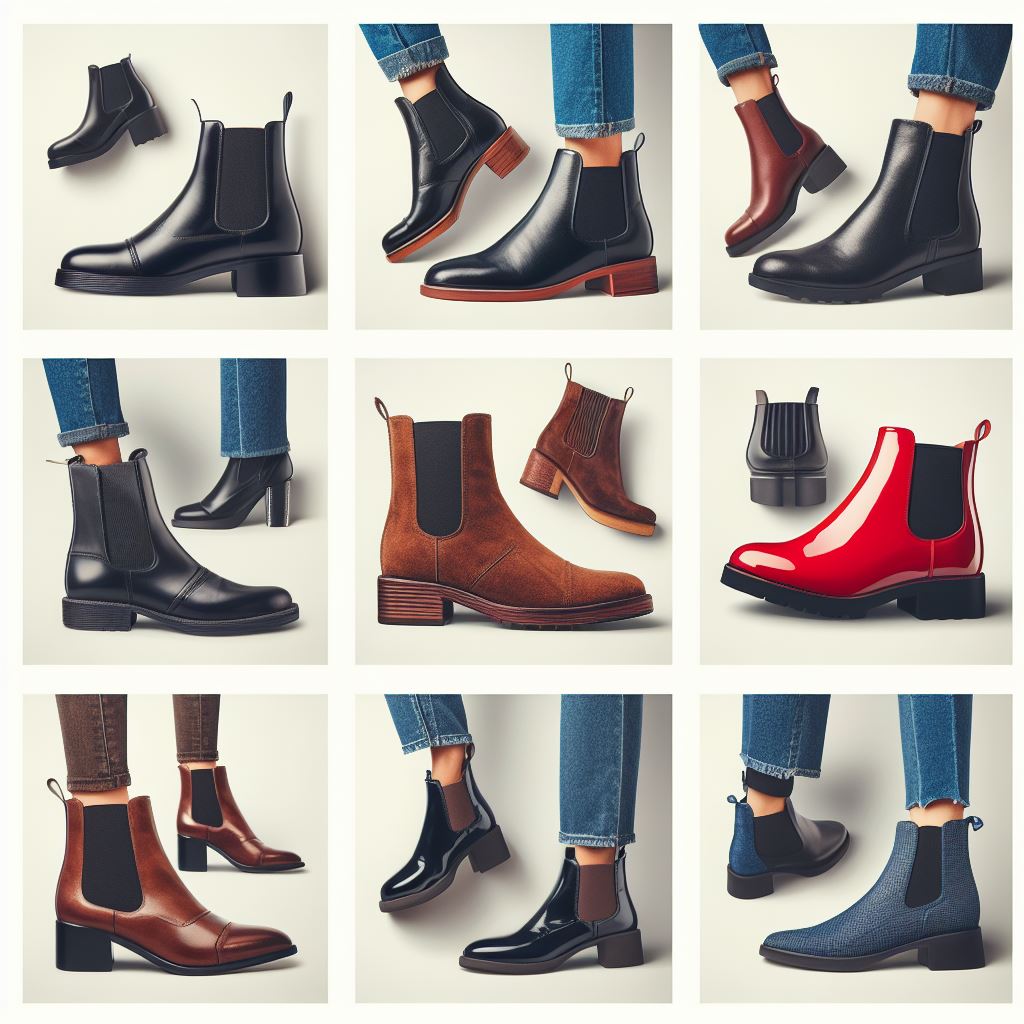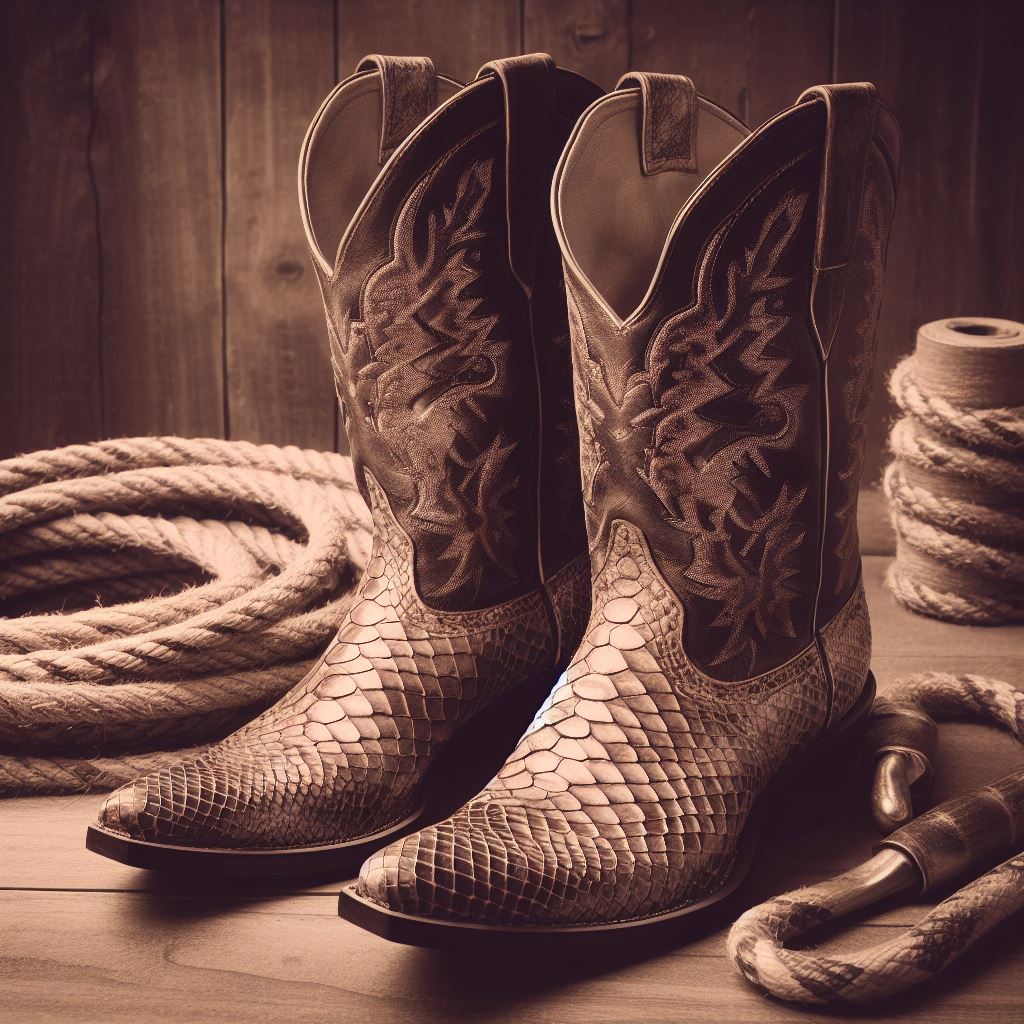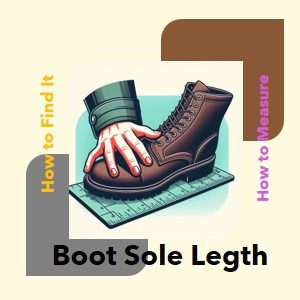If you’ve ever had a foot or ankle injury, you know how frustrating it can be to wear a walking boot. Although walking boots can protect and speed up the healing process, they can also cause problems. Walking boots, also known as orthopedic boots, can affect your posture, gait, and balance, as well as cause discomfort and pain in your back, leg, and other feet. Choosing the best shoe to wear with a walking boot can help you walk more naturally and level your feet. In this blog post, we’ll discuss how to choose the best shoe to wear with a walking boot and offer tips on proper wear and transitioning from a walking boot to a regular shoe. By the end of this post, you’ll have a better understanding of how to select the best shoe for your walking boot, making your recovery process more comfortable and hassle-free.
Table of Contents
ToggleWhy You Need a Shoe Leveler for Walking Boot?
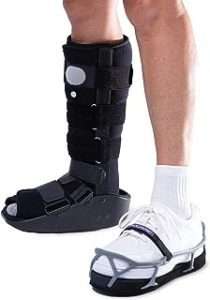 A shoe leveler is an apparatus that can be attached to your regular shoe and used in conjunction with a walking boot. It can be in the form of a heel lift, wedge, or platform. By using a shoe leveler with your walking boot, you can improve your foot balance, reduce the strain on your joints and muscles, and avoid limping or slouching to one side.
A shoe leveler is an apparatus that can be attached to your regular shoe and used in conjunction with a walking boot. It can be in the form of a heel lift, wedge, or platform. By using a shoe leveler with your walking boot, you can improve your foot balance, reduce the strain on your joints and muscles, and avoid limping or slouching to one side.
Wearing a walking boot can have negative effects on your body, such as foot pain, leg length differences, back, hip, and knee aches, muscle atrophy and weakening, reduced range of motion and mobility, and an increased risk of falls and injuries. But, by using a shoe leveler with your walking boot, you can maintain your normal walking pattern and speed, and avoid developing bad habits that can affect your recovery and long-term health.
How to Choose the Best Shoe to Wear with Walking Boot?
1. The Walking Boot’s Height and Weight
2. The Dimensions and Form of Your Foot
3. The Kind and Extent of Your Wound
4. How Long and How Often You Use Your Walking Boots
5. Your Lifestyle and Degree of Activity
6. The Solace and Assistance You Require
7. Your Preferred Look and Style
The Best Shoes to Wear with Walking Boots
Best shoe to wear with walking boot women’s:
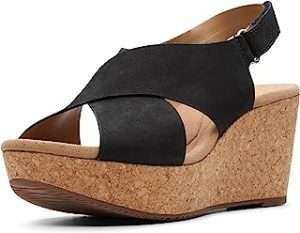 For women’s walking boots, the ideal footwear would be fashionable and feminine shoes such as ballerina flats, booties, and wedges. These shoes are comfortable and supportive, while also adding style and height to your outfit. Some examples of these shoes include the Women’s Annadel Eirwyn Wedge Sandal from Clarks, the Women’s Brief-Ankle Boot from Dr. Scholl’s Shoes, and the Women’s Cleo-Scalloped Knit Skimmer Ballet Flat from Skechers.
For women’s walking boots, the ideal footwear would be fashionable and feminine shoes such as ballerina flats, booties, and wedges. These shoes are comfortable and supportive, while also adding style and height to your outfit. Some examples of these shoes include the Women’s Annadel Eirwyn Wedge Sandal from Clarks, the Women’s Brief-Ankle Boot from Dr. Scholl’s Shoes, and the Women’s Cleo-Scalloped Knit Skimmer Ballet Flat from Skechers.Best sneaker to wear with walking boot:
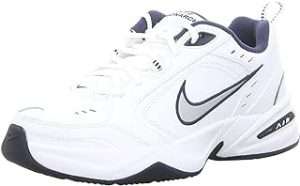 If you prefer a sporty and functional shoe, you can go for a sneaker, trainer, or running shoe. These shoes provide cushioning and stability to your foot while still being lightweight and breathable. Examples of these shoes are the Nike Men’s Air Monarch IV Cross Trainer, the New Balance Women’s FuelCore Nergize V1 Sneaker, and the ASICS Men’s Gel-Venture 7 Running Shoes.
If you prefer a sporty and functional shoe, you can go for a sneaker, trainer, or running shoe. These shoes provide cushioning and stability to your foot while still being lightweight and breathable. Examples of these shoes are the Nike Men’s Air Monarch IV Cross Trainer, the New Balance Women’s FuelCore Nergize V1 Sneaker, and the ASICS Men’s Gel-Venture 7 Running Shoes.Best shoe to wear after walking boot:
 If you want a transitional and adaptive shoe, you can choose a sandal, slipper, or clog. These shoes provide flexibility and ease to your foot while still being protective and supportive. Examples of these shoes are the Crocs Unisex-Adult Classic Clog, the RockDove Men’s Original Two-Tone Memory Foam Slipper, and the Birkenstock Unisex Arizona Essentials EVA Sandals.
If you want a transitional and adaptive shoe, you can choose a sandal, slipper, or clog. These shoes provide flexibility and ease to your foot while still being protective and supportive. Examples of these shoes are the Crocs Unisex-Adult Classic Clog, the RockDove Men’s Original Two-Tone Memory Foam Slipper, and the Birkenstock Unisex Arizona Essentials EVA Sandals.Best shoe to wear with orthopedic boot:
 If you need a medical and therapeutic shoe, you can try an orthopedic shoe, diabetic shoe, or post-op shoe. These shoes provide healing and recovery to your foot while still being durable and safe. Examples of these shoes are the Orthofeet Proven Plantar Fasciitis, Foot and Heel Pain Relief. Extended Widths. Orthopedic Walking Shoes Diabetic Bunions Women’s Sneakers, Coral, the Dr. Comfort Men’s Performance-X Double Depth Diabetic Shoe, and the Darco APB All-Purpose Boot, Closed Toe For All Season Protection, High Top Design, and Ankle Strap for Secure and Safe Ambulation, Large Fits Women’s 10.5-13, Men’s 9.5-12.
If you need a medical and therapeutic shoe, you can try an orthopedic shoe, diabetic shoe, or post-op shoe. These shoes provide healing and recovery to your foot while still being durable and safe. Examples of these shoes are the Orthofeet Proven Plantar Fasciitis, Foot and Heel Pain Relief. Extended Widths. Orthopedic Walking Shoes Diabetic Bunions Women’s Sneakers, Coral, the Dr. Comfort Men’s Performance-X Double Depth Diabetic Shoe, and the Darco APB All-Purpose Boot, Closed Toe For All Season Protection, High Top Design, and Ankle Strap for Secure and Safe Ambulation, Large Fits Women’s 10.5-13, Men’s 9.5-12.Best shoes to wear with an air cast:
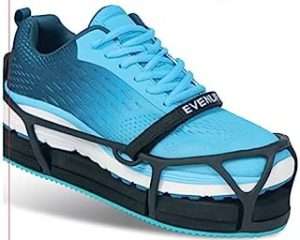 If you are wearing an air cast, you can try a shoe that is specially designed to fit an air cast, such as the Even-up Shoe Balancer/Leveler or the Cast Coverz Shoez! These shoes provide leveling and balancing to your foot while being easy to put on and take off. You can choose from different options, accessories, and customizations to suit your preference and budget.
If you are wearing an air cast, you can try a shoe that is specially designed to fit an air cast, such as the Even-up Shoe Balancer/Leveler or the Cast Coverz Shoez! These shoes provide leveling and balancing to your foot while being easy to put on and take off. You can choose from different options, accessories, and customizations to suit your preference and budget.Best walking shoes for travel in Europe:
 For travelers in Europe who want versatile and comfortable shoes, walking shoes, hiking shoes, or casual shoes are the best options. These shoes provide traction and durability to your foot while still being stylish and suitable for different terrains and climates. Examples of these shoes are the Skechers Performance Women’s Go Walk 4 Pursuit Walking Shoe, the Merrell Men’s Moab 2 Vent Hiking Shoe, and the ECCO Men’s Soft 7 Sneaker.
For travelers in Europe who want versatile and comfortable shoes, walking shoes, hiking shoes, or casual shoes are the best options. These shoes provide traction and durability to your foot while still being stylish and suitable for different terrains and climates. Examples of these shoes are the Skechers Performance Women’s Go Walk 4 Pursuit Walking Shoe, the Merrell Men’s Moab 2 Vent Hiking Shoe, and the ECCO Men’s Soft 7 Sneaker.How to Wear a Walking Boot Properly?
1. Follow Your Physician’s Instructions
2. Wear a Sock or Liner
3. Check for Wear and Tear
4. Clean Your Walking Boot
5. Do Exercises and Stretches
How to Transition from Walking Boot to Normal Shoe?
Consult with Your Doctor or Physical Therapist:
Start Slowly and Gradually Increase Your Shoe Use:
Use a Shoe Leveler or Heel Lift:
Provide Support and Protection with Compression Sock, Brace, or Wrap:
Do Exercises and Stretches to Strengthen and Restore Your Foot or Ankle:
Be Patient and Positive During Your Transition:
Side Effects of Wearing a Walking Boot:
Best Sneaker, Tennis Shoe, and Casual Shoe for Walking Boot:
Ending Note
FAQ
Most frequent questions and answers
What is a walking boot?
A walking boot is an apparatus that protects and immobilizes your damaged foot or ankle. It helps to prevent further damage and speeds up your healing process.
Why do I need a shoe to wear with walking boot?
A shoe is necessary to go with a walking boot to maintain foot balance and reduce the strain on your joints and muscles. It also helps to avoid limping or slouching to one side.
What kind of shoes to wear with a walking boot?
Athletic or supportive sneakers are the best options to wear with a walking boot. They offer non-slip soles, good cushioning, and supportive arch support. They can also provide a comfortable and appropriate fit for your foot. Different brands, models, and features are available to meet your needs and preferences.
Can you wear heels with a walking boot?
No, it’s not recommended to wear heels with a walking boot. This can cause more strain on your legs, hips, back, and feet, and increase your risk of falls and injuries. It’s important to wear shoes that fit the weight and height of your walking boot. You can use a walking boot shoe leveler to achieve a good fit.
What do you wear after walking boots?
After wearing a walking boot, you can wear transitional and adaptable footwear such as sandals, slippers, or clogs. These shoes can offer some flexibility and comfort to your feet while still providing support and protection. You can also use a compression sock, brace, or wrap to reduce inflammation and pain in your foot or ankle.
Can you wear sandals with a walking boot?
Is a walking boot or shoe better?
A walking boot and a shoe both have different purposes. A walking boot is better for immobilizing and protecting your injured foot or ankle, promoting faster healing and preventing further damage. A shoe is better for restoring and strengthening your foot or ankle, improving your function and activity level. Consult your doctor or physical therapist for specific recommendations on using a walking boot or shoe.
What shoes should you wear with a walking boot?
You should wear shoes that are appropriate for the weight and height of your walking boot and that fits your foot wells without causing any pressure or friction. You should also choose shoes based on the type and severity of your injury, the frequency and duration of your walking boot use, your activity level, comfort and support needs, and your style preferences.
Do you wear a shoe with a walking boot?
Yes, it’s recommended to wear a shoe with a walking boot unless your doctor or physical therapist advises otherwise. Wearing a shoe with a walking boot can help balance your feet, reduce stress on your joints and muscles, and improve your posture. You can use a shoe leveler for walking boot to achieve a good fit.
How do I choose the best shoe to wear with walking boot?
To choose the best shoe to wear with a walking boot, consider several factors such as the height and weight of your walking boot, the size and shape of your foot, the type and severity of your injury, the duration and frequency of your walking boot use, your activity level and lifestyle, your comfort and support needs, and your style and appearance preferences.
How do I wear a walking boot properly?
To wear a walking boot properly, follow the instructions and advice from your doctor or physical therapist. Wear a sock or liner under your walking boot, check your walking boot regularly for any signs of wear and tear, clean your walking boot regularly to keep it hygienic and fresh, and do some exercises and stretches to keep your muscles and joints healthy and strong.
How do I transition from walking boot to normal shoe?
To transition from a walking boot to a normal shoe, consult your doctor or physical therapist before making the change. Begin by wearing your normal shoe for short periods of time and in low-impact activities. Use a shoe leveler for the walking boot or a heel lift in your normal shoe. Wear a compression sock, brace, or wrap on your injured foot or ankle, do some exercises and stretches to strengthen and restore your foot or ankle, and be patient and positive during your transition.
Visit Firesfeet Blog – Your One-Stop Shop for Boot Reviews and Guides!
Here, we empower firefighters with the right boots for their needs. Our collection includes a variety of styles and sizes, guaranteeing the perfect fit for anyone. We take pride in our product quality, ensuring that our boots stand the test of time. With Firesfeet, you can confidently shop for wildland firefighting boots. Visit us today and discover why we are the most trusted source for firefighters looking to take on any challenge wearing firefighting footwear!
Keep yourself safe out there!
#WildlandFirefighters #SafetyFirst #Firesfeet#



